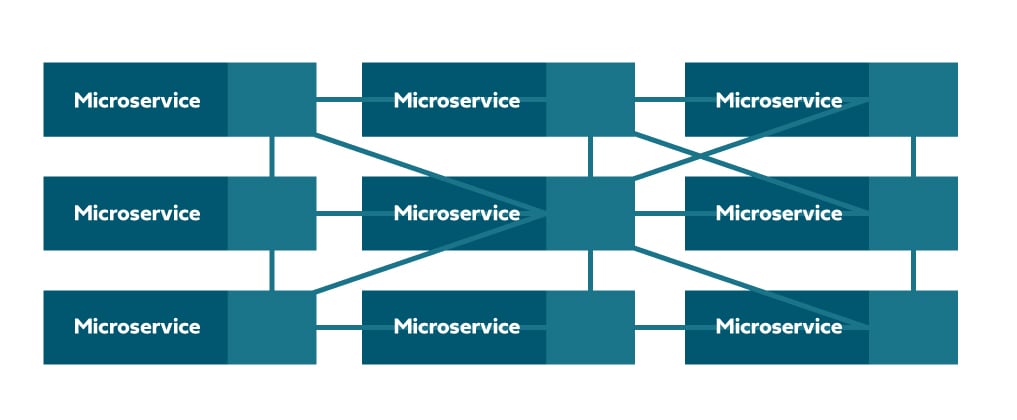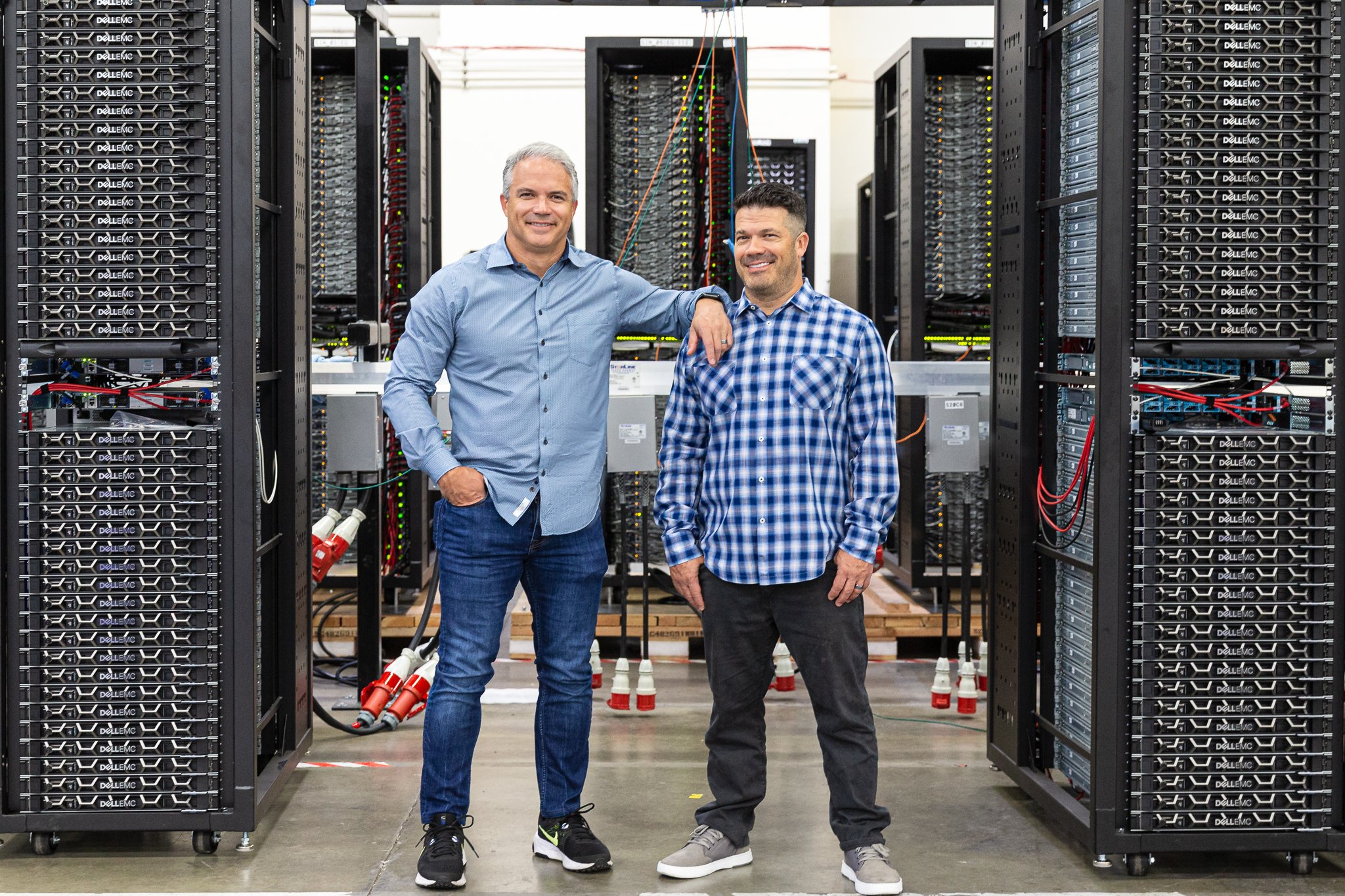Containers and microservices, well on their way to becoming a fundamental part of any organization’s DevOps and IT toolkit, have rapidly emerged as an answer to the question, “What are the next steps in driving digital transformation?”
While the use of containers and microservices may seem at first glance to benefit application development and deployment, as you’ll see below, they’re also delivering ROI in a big way—they can help your organization maintain a healthy minimum viable product (MVP).
In the landscape of DevOps, industries and organizations across the globe are already moving to containers and microservices.
By 2025, we may already see a significant increase (more than double from 2019) in the number of organizations running containerized applications. And that’s a great thing because the flexibility offered by microservices allows for independent building, development, and deployment, as well as cost savings and scalability.

When everything’s said and done—it allows for seamless collaboration between autonomous teams in your organization.
The bottom line—a healthy MVP
Promoting a healthy MVP mindset means allowing for frequent production change at scale.
Your organization’s developers must focus their attention on writing code and releasing changes, delivering constant innovation and upgrades to your customers and workforce. Placing valuable resources on extra IT responsibilities—like networks, servers, and storage—can bottleneck this process.
To create a flexible, scalable app delivery model that’s cost-efficient and allows for Continuous Integration/Continuous Delivery (CI/CD), consider an approach that homes in on two transformative methodologies:
 Containers
Containers
Can you package and run applications across diverse environments on premises and in the cloud, while providing your developers a simple way to make apps easier to develop, deploy, and manage?
As previously mentioned, these lightweight application packages are transforming the industry, allowing for versatility of workload execution in private, public, and even hybrid clouds.
 Microservices
Microservices
Is your current approach based on breaking down monolithic applications into smaller modules that lend themselves to rapid reuse and increased efficiency?
A microservices architecture consists of autonomous services, each self-contained to implement a single business capability, making updates and application management easier for your teams.
When deciding whether to take your DevOps to the next level of workload management with containers and microservices, you might find yourself asking:
- How scalable is my organization’s current model?
- How agile is our CI/CD pipeline?
- How portable are our applications?
- Is a managed service right for our organization?
Let’s take a look at how microservices and containers address these questions:
1. How scalable is my organization’s current model?
If you’re looking to roll out production-ready code at scale, Kubernetes is the transformative tool you need. To take full advantage of the scalability it provides, you’ll need to leverage both microservices and integrated service meshing.
A service mesh decouples capabilities like traffic management, observability, policy, identity, and security out of the application layer and moves them to an infrastructure layer. Instead of one monolithic application that you drop into a container and continually maintain, the use of integrated service meshing allows you to overcome the challenges of service discovery and communication.

To further reduce internal effort and provide even more scalability, you could also consider using managed Kubernetes services. In a managed service scenario, service discovery and other cluster-wide configuration and integration (which might otherwise be challenging and time consuming) are simplified right out of the box. With that taken care of, your DevOps can focus on app development and writing code.
2. How agile is our CI/CD pipeline?
When assessing your organization’s agility and how you move code through your pipeline, it’s crucial that you also take a look at integration tests. Are you able to test quickly? Are your developers able to spin up and shut down test environments rapidly without excess costs and resources?
Let’s say a developer makes changes to code by deploying a namespace and running tests. In an agile CI/CD pipeline, your dev can perform this task and then quickly delete the namespace—spinning up a place to work and then shutting it down so it doesn't keep costing money. This freedom allows you to have more dynamic environments and focus more of your resources on development and product delivery.
And if the above process isn't easy or agile, containers and microservices in a managed service can help, allowing for the following freedom—with less overhead:
- One-command deploys
- Built-in monitoring
- Logging collection services
- Ability to handle disparate environments
- Consolidation of multiple log sources
- Monitoring metrics
3. How portable are our applications?
With any level of digital transformation, there are bound to be hiccups and challenges, whether it's long time-to-deployment, unforeseen costs, or integration issues.

Maybe it's taking a long time to roll code out to virtual machines (VMs). What if you want the ability to deploy across multiple datacenters? What if you want to deploy in the cloud and on prem?
With a cloud-first model and the help of a managed service, you can take advantage of personalized recommendations on how to streamline your deployment.
Plus, if you plan a similar deployment strategy for your organization’s hybrid environments, you can run Kubernetes on prem as well as Kubernetes with Azure Kubernetes Service (AKS). You’ll simplify the process, save DevOps valuable time, and save your organization money.
4. Is a managed service right for our organization?
Modernizing your organization’s workforce and CI/CD pipeline with containers and microservices can at times seem daunting. Fortunately, container orchestration services, like AKS, exist to help simplify the process and keep your overhead low.
It offers provisioning, scaling, and resource upgrades as required or on demand, depending on your specific needs, with no downtime and without requiring you to have expert knowledge of container orchestration.
AKS brings together Azure and Kubernetes in a fully managed service that allows customers to create clusters quickly and easily. It’s an ideal platform to develop modern, containerized applications for deployment in a public, private, or hybrid cloud environment.
While your developers concentrate their attention on code updates and deployments, the managed service oversees your data collection, API, etcd, or any of the other functions in the Kubernetes control plane.
The next step in your cloud-first journey
Thanks to containers and microservices, the business of app development has been transformed. Managed Kubernetes services like AKS make it possible for any organization looking to scale up and maintain a healthy MVP to transform and streamline its DevOps workforce.














